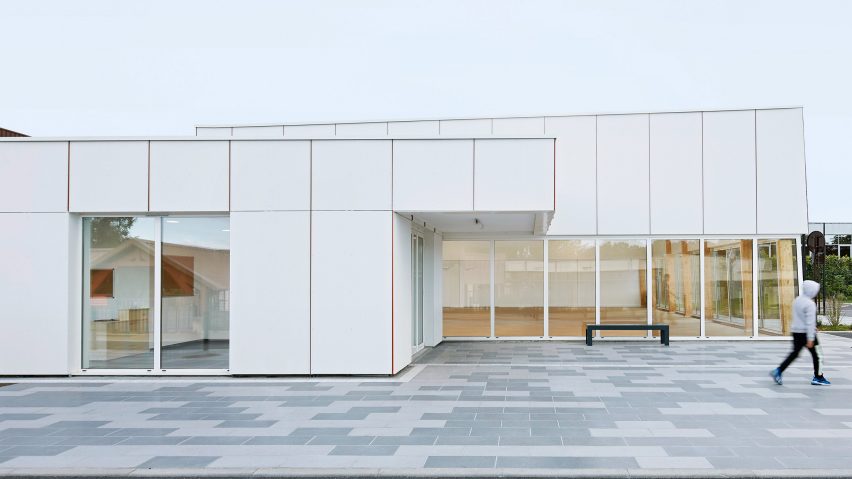
Lemoal Lemoal completes first public building in France to be made from hempcrete
Paris studio Lemoal Lemoal has used hempcrete blocks to build the Pierre Chevet sports centre in France, which the studio believes is the country's first public building built from the biomaterial.
Named Pierre Chevet, the 380 square-metre sports hall is located in the town of Croissy-Beaubourg near Paris.
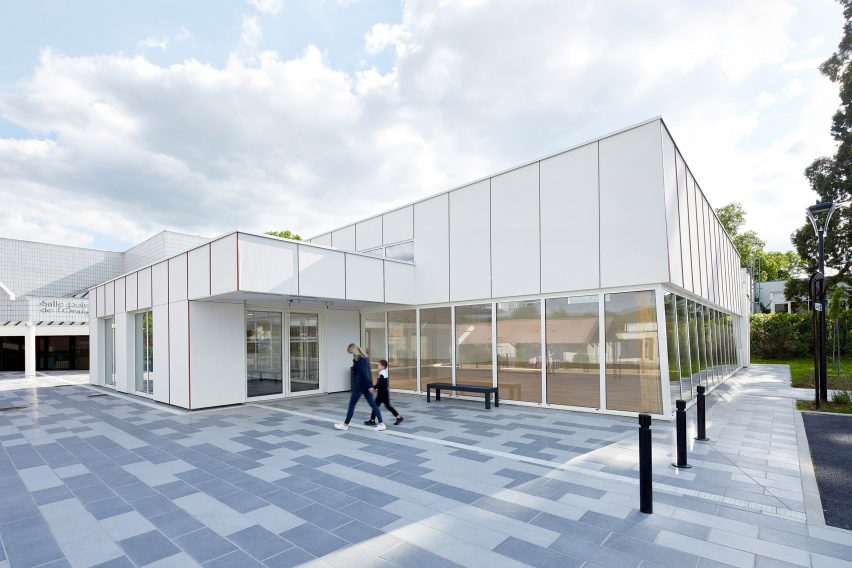
Lemoal Lemoal used the building as an opportunity to experiment with hemp as a construction material.
The sports centre contains an exercise hall and changing rooms. Its walls are infilled with hempcrete blocks constructed by cement manufacturer Vicat.
The blocks were made from lime mixed with hemp hurds. These are the woody inner parts of the stems of the hemp plant and are also known as shives.
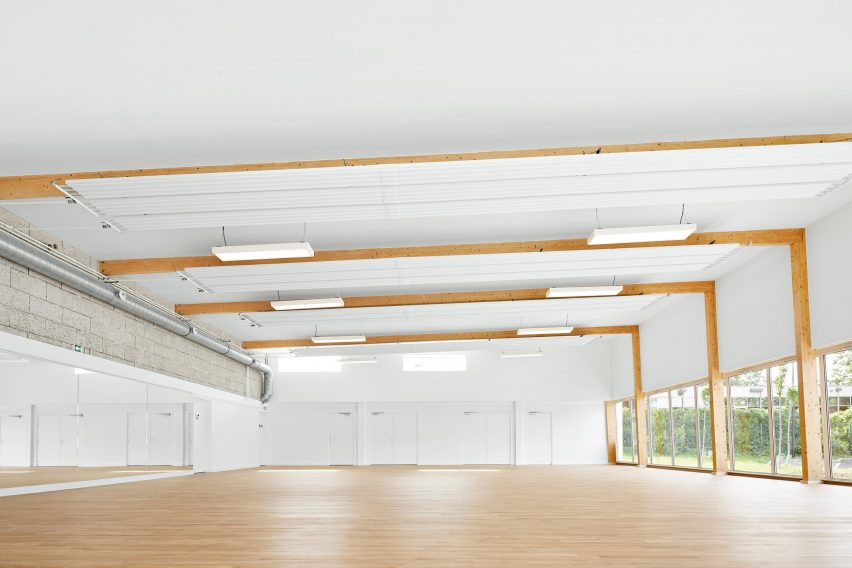
The exterior of the building is clad in white, cement-fibre panels that protect the hemp blocks.
Inside, the building has a wooden, half-vaulted structure that is adjoined to the hempcrete walls for support and provides the interior space with a column-free interior.
"The structure is a mix of timber and hempcrete blocks, wooden half-vaulted porticoes lean against a wall of hempcrete blocks for support," the architect told Dezeen.
"This combination frees a maximum of space for practising sports, and allows large opening of two facades to the public space."
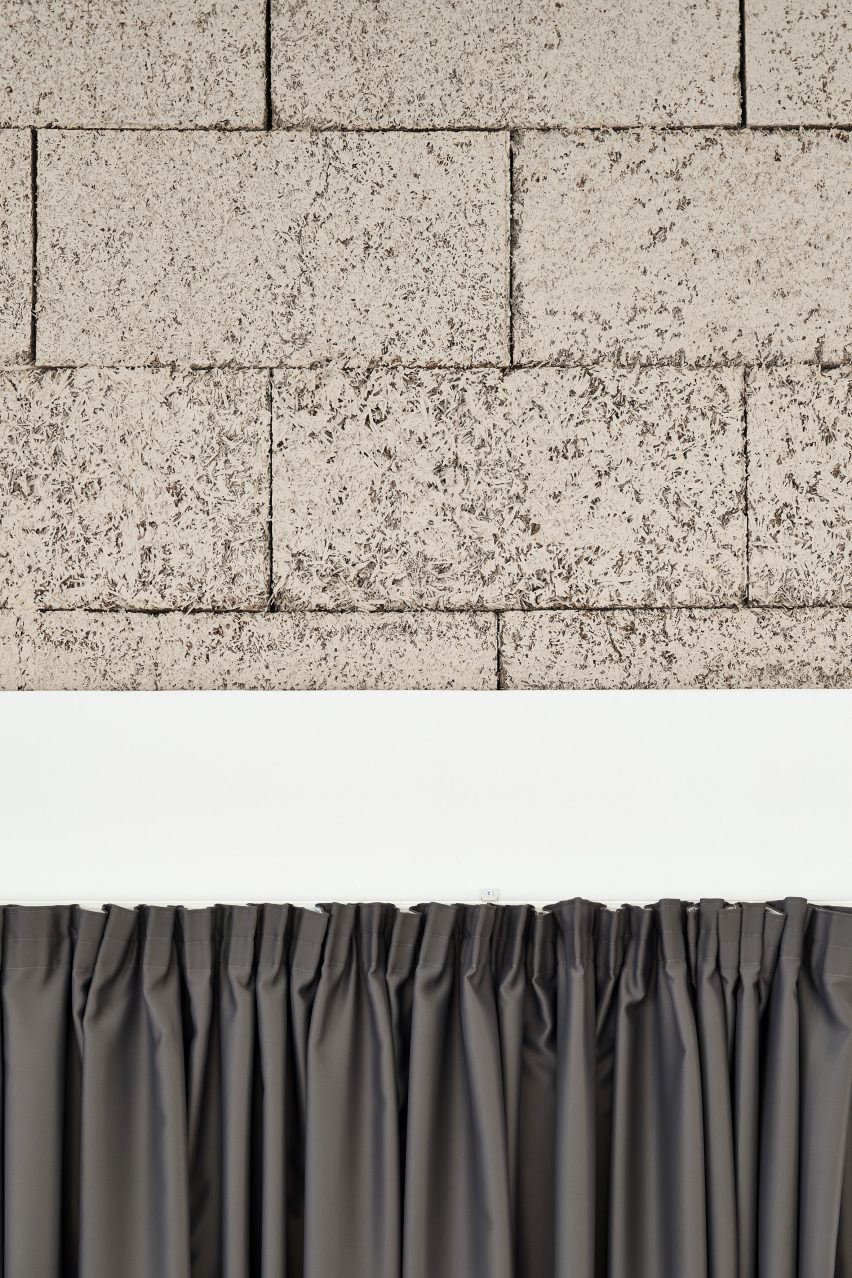
Lower sections of the walls were treated with hemp plaster – a technique typically used across the interiors of hempcrete buildings to conceal the material's textural quality.
Other areas of the walls were left untreated to reveal the blockwork and aid the building's acoustic performance.
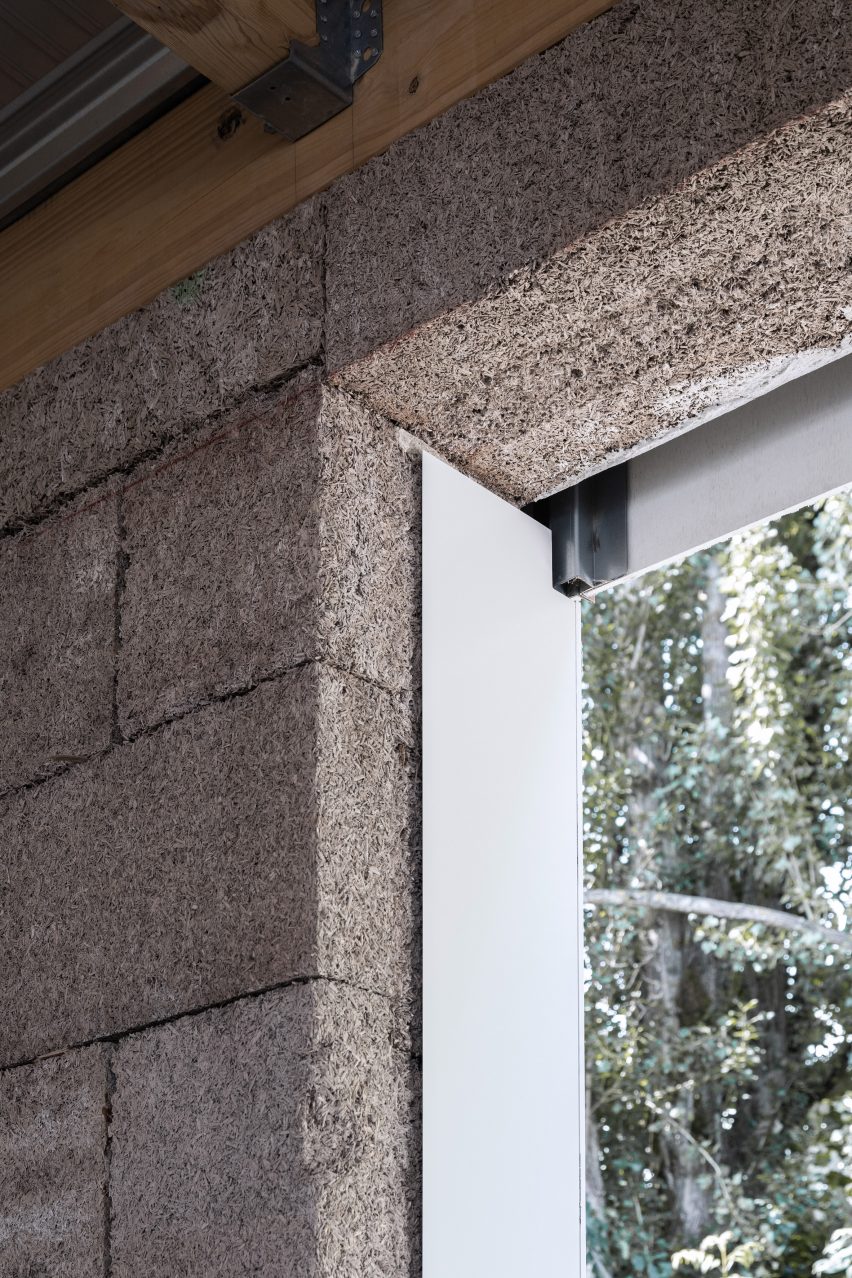
Hemp has multiple qualities including high thermal and acoustic performance. The hempcrete panels are fire-resistant to the REI 30 standard, which means they will maintain their integrity for 30 minutes in a fire.
"By virtue of [hempcrete's] multiple qualities, hemp blocks makes it possible to avoid the use of linings and to reduce the thickness of the walls to the essential," said the studio.
"It also makes it possible to increase the practicable surface of the sports hall."
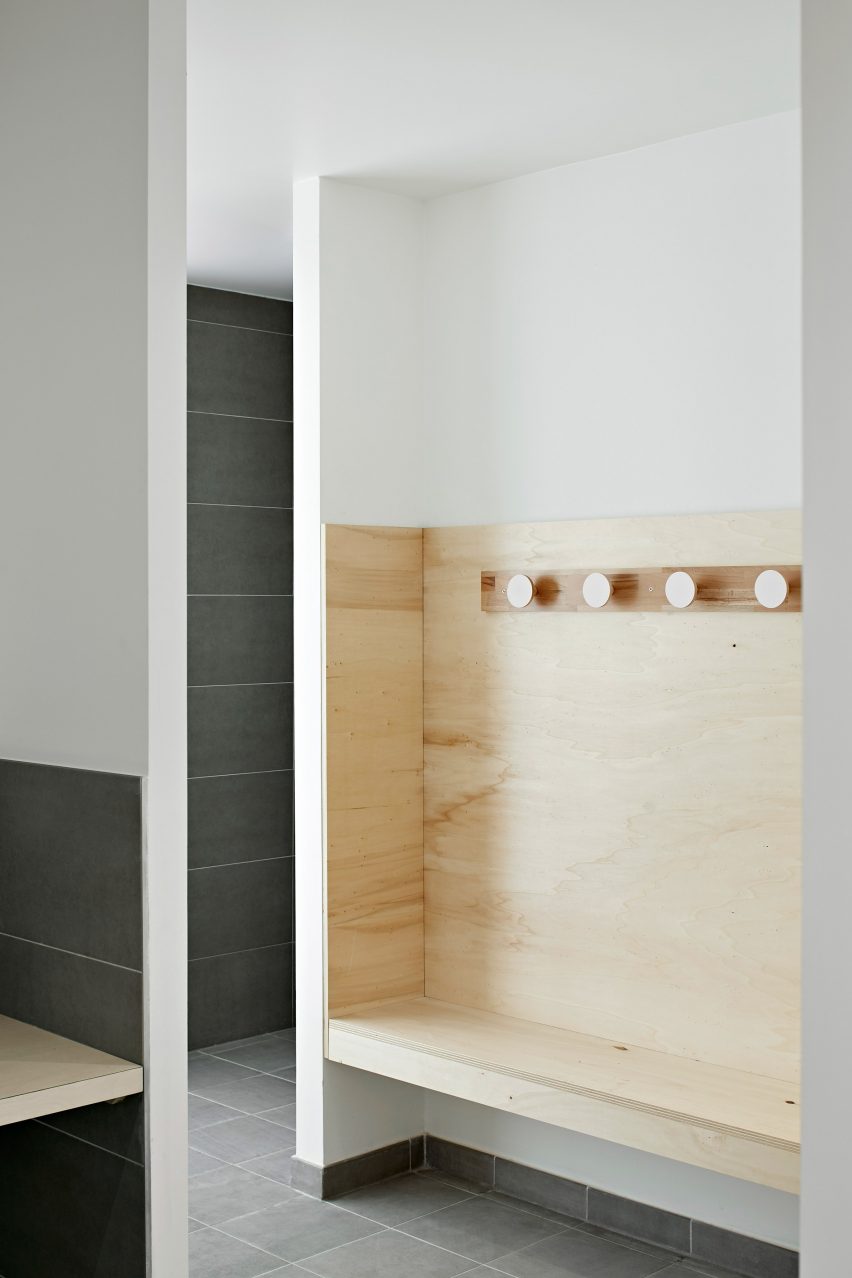
Hemp is increasingly in demand as a construction material due to its performance and the fact that it is a biomaterial that helps reduce the embodied carbon of a construction project.
New laws in France calling for greater use of biomaterials are leading architects to experiment with hemp. Architect Barrault Pressacco recently used hemp and timber for an apartment building in Paris.
The hemp panels used for Lemoal Lemoal's sports centre were grown and fabricated within 500 kilometres of the construction site, minimising transportation emissions and helping the local economy.
"Hempcrete is very popular due to its high qualities for construction, which is really good news for sustainability," said the studio.
"We choose to work with hempcrete because this sustainable and long-lasting material has also multiple performances, which allows us to reduce the thickness of the walls and get high quality and spacious interior rooms."
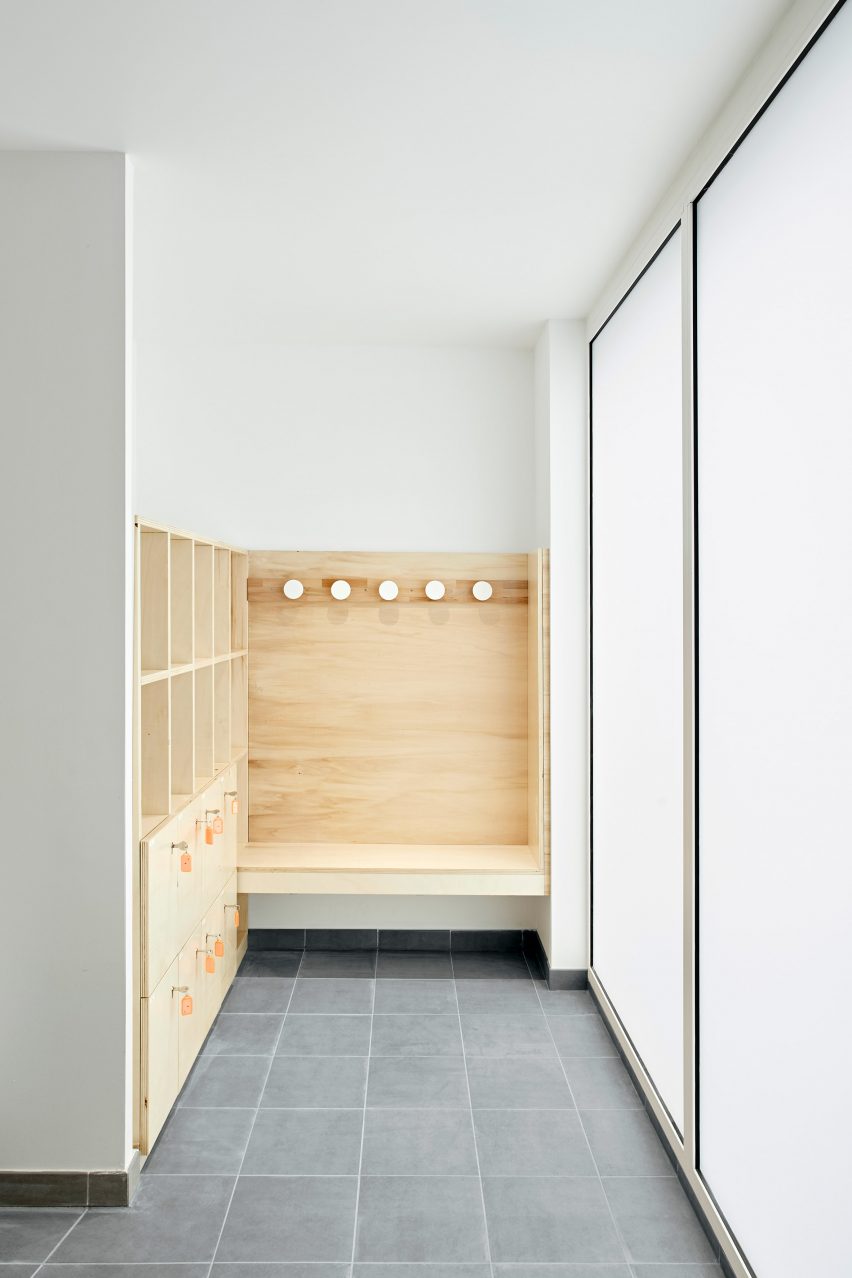
The blocks used in the building can be assembled dry and have an interlocking system that does not require adhesives or mortar. The hempcrete also removes the need for additional insulation due to its natural insulating qualities.
"The innovation here is not to use hempcrete for a public building but the hempcrete blocks with dry interlocking."
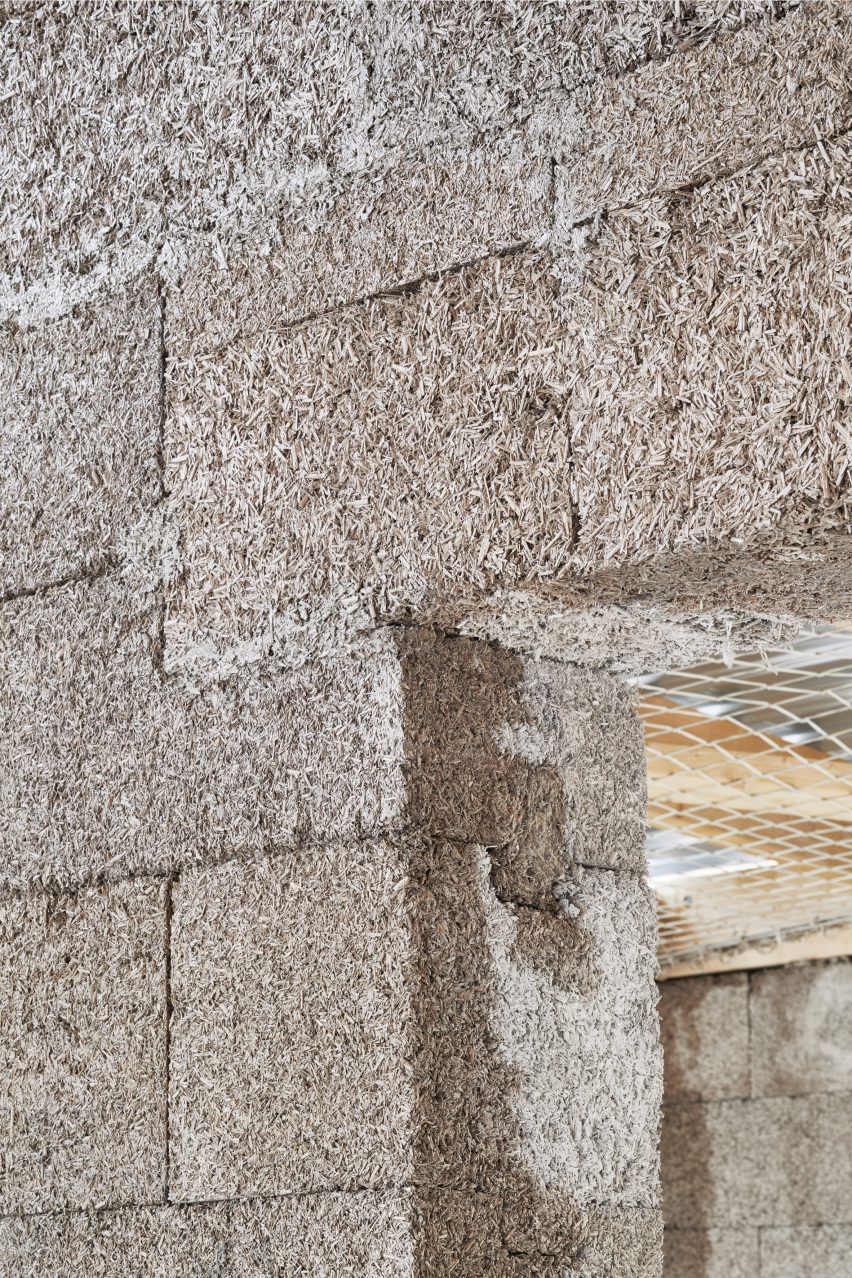
The studio explained that the sports hall is France's first public building to use hempcrete blocks and hopes it will encourage others to consider using the material on future projects.
"The Pierre Chevet sports hall is the first new public facility built with hemp-concrete blocks, it helps to engage stakeholders in the building industry in ecological transition and helps to reduce the number of different materials used," said Lemoal Lemoal.
"The project was notably an opportunity to train a masonry company to this technique. Lighter than a traditional concrete block, but with a similar implementation, the hemp block can convince entrepreneurs to permanently modify their prescriptions."
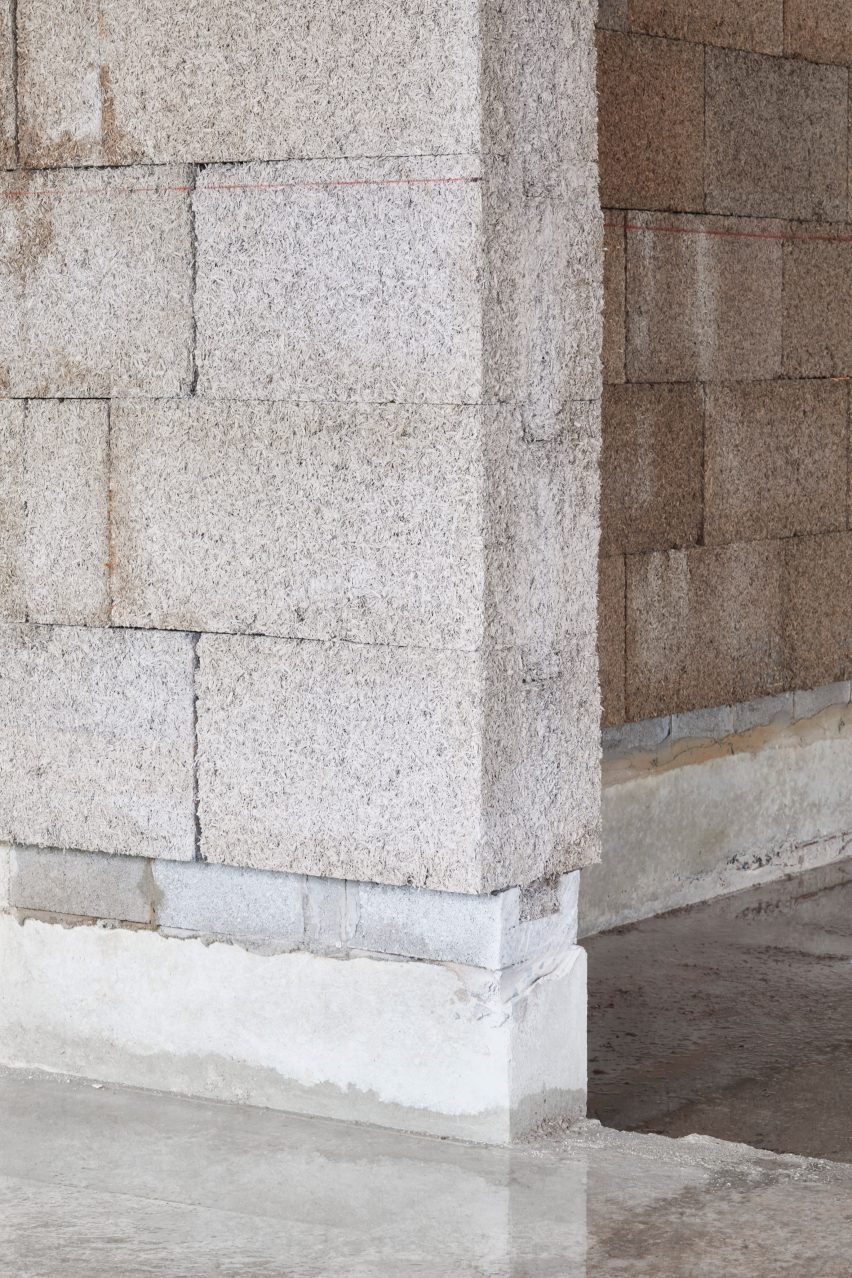
Hemp is a carbon sequestering material when used in constriction. Cambridge University researcher Darshil Shah explained that hemp is one of the top CO2-to-biomass converters.
He stated "[hemp] is even more effective than trees," at sequestering carbon and that "industrial hemp absorbs between eight to 15 tonnes of CO2 per hectare of cultivation."
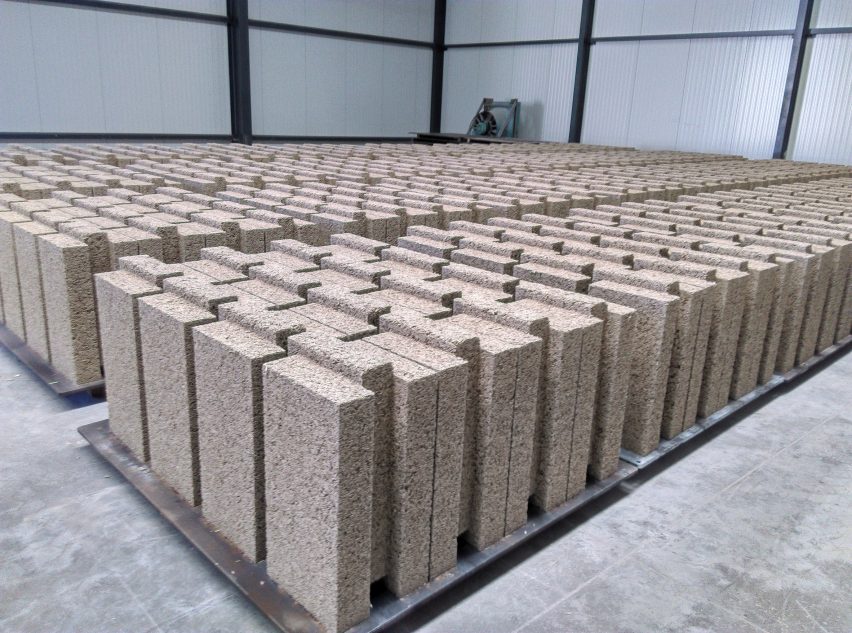
Hemp is becoming more widely used as a construction material. A video made at Margent Farm in Cambridge details how Hemp is grown, cultivated and processed to build a home for the farm owner.
Elsewhere in Cambridge, Jonathan Tuckey Design recently announced its plans to add a hempcrete extension to a house in a conservation area.
Photography is by Elodie Dupuy.